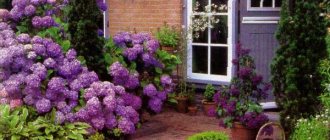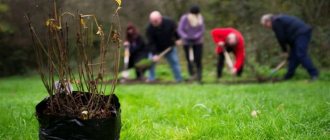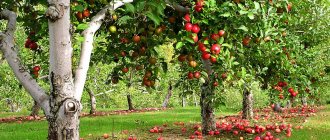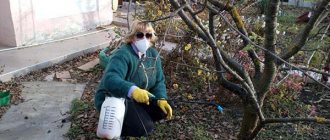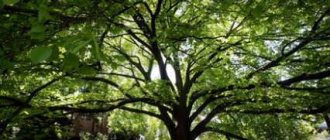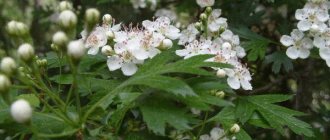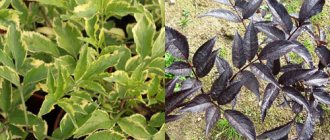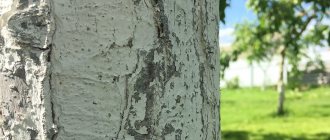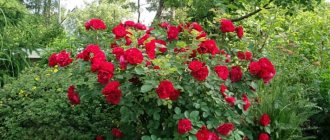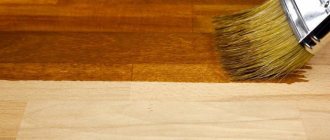How to properly clean your garden before winter
The work cycle must begin immediately after harvesting. Before treating fruit trees in the fall, you need to know when it is best to do this in order to provide reliable protection from diseases and pests.
- All leaves and branches must be carefully removed, because they are a favorable breeding ground for insects and numerous bacteria.
- You should not use plant residues as organic fertilizer by adding them to the soil, this will only make it easier for pests.
- After cleaning the area, it is worth digging up the circles around the trunk to destroy the larvae that could have accumulated in the ground during the warm period. This task must be carried out carefully so as not to damage the root system of the plants.
- Digging should be done in dry weather to prevent the risk of the soil layers sticking together, which will allow the fungi in them to remain intact.
Features of autumn processing
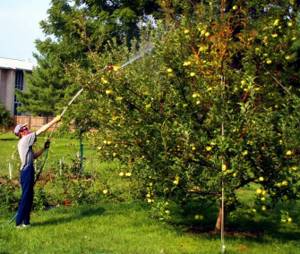
Plums are disinfected against the appearance of the cockchafer, which eats the ovaries of fruits and leaves. The roots of young seedlings are damaged by its larvae, which can lead to the death of the entire tree.
For apple, plum, pear and cherry trees, spraying is a way to preserve leaves and fruits, including during ripening.
Tree processing
One of the most proven methods of combating larvae and insects that like to breed under the bark (in tree trunks) is whitewashing. This will not only destroy the eggs they lay, but will also help the trees withstand frost more easily. Every gardener knows how to treat fruit trees in the garden in the fall, and in most cases it is slaked lime. It is the one that best helps against diseases and pests.
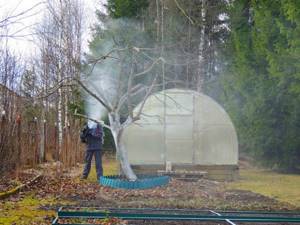
Before whitewashing, it is necessary to remove damaged bark and possible moss on the tree by treating the trunks with garden varnish. Then you can carry out the procedure itself, applying the product in several layers to a height of about 1.5 meters and a thickness of at least 3 mm.
The whitewash mixture can be purchased ready-made at a specialty store or prepared independently by adding slaked lime and copper sulfate to the water. The main ingredients for autumn garden treatment include:
- urea;
- copper sulfate;
- inkstone.
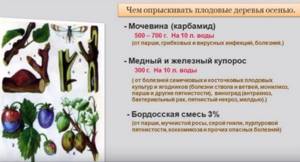
But they must be used before the onset of permanent frost. The optimal time for carrying out activities can be considered the end of September or October, because they can activate vital functions in the trunks, which will become a problem when cold weather sets in.
Advice!
All work should be carried out in calm and dry weather, avoiding contact of products with exposed skin. To do this, you will have to purchase personal protective equipment in advance and strictly follow safety rules.
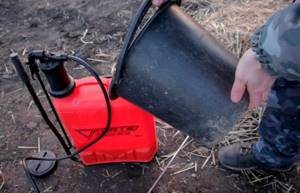
Plant processing time
Many gardeners, especially beginners, are interested in information on how to treat trees and shrubs in the fall against pests and diseases. Processing must be carried out correctly. In addition, digging of the soil is required.
With the arrival of cold weather, especially if the plant grows in a region with a cold climate, it is necessary to cover the crops. Special covering material is often used, but peat, sawdust, and dry leaves can also be useful.
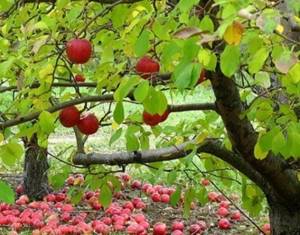
Trees and shrubs should be treated against pests and diseases in the fall when the plants have lost their leaves and are ready for it. Most often this is the end of September - beginning of October.
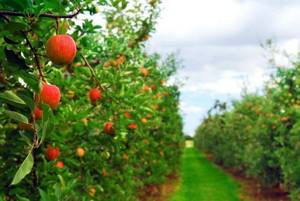
inkstone
Iron sulfate has a powerful effect in the fight against the formation of moss and lichen, which not only themselves affect trees, but also create favorable conditions for insects to lay eggs. Processing provides additional nutrition to the bark, which is saturated with beneficial microelements before winter and can more easily withstand unfavorable weather.
Most often, this product is used when treating apple orchards, cherry and peach trees. A lack of vitriol is fraught with a decrease in yields. And preparing a special product is as simple as possible; you just need to mix 15 liters of water with 1 kilogram of the product.
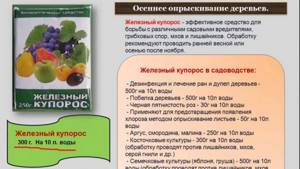
Chemicals for spraying fruit plants against diseases and pests
Chemicals are used to treat fruit trees when infusions do not cope with numerous pests, as well as when plants are affected by diseases.
Bordeaux liquid
This product can be used for repeated spraying when there are already buds on the branches, but have not yet blossomed. But the prepared solution must be very weak. To a bucket of water you need to add:
- 50 grams of dry copper sulfate,
- 0.2 kg lime.
Everything is mixed and pollination is carried out with the resulting solution.
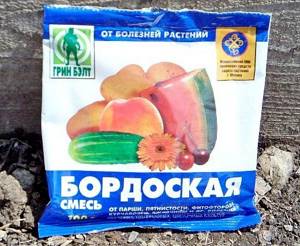
Urea (urea)
This preparation can be used to treat the trunk and branches a week after the end of flowering of pears (plums, apple trees), as well as in the further preparation of fruit trees for winter.
In the first case, you need to take 0.5 kg of urea and about a matchbox of copper sulfate per bucket of liquid. A high concentration of such a solution destroys all larvae. And if you spray the plum in the fall, you will be able to protect the plum blossom from spring frosts.
A weak urea solution can be used to spray the orchard after it blooms. This will save the seedlings from aphids, leaf rollers, and flower beetles. To obtain a weak mixture, take 50 grams of urea per bucket of liquid.
Treating trees with urea in the autumn can be done no earlier than the branches have lost half their foliage. Then you need to take 0.25 kg of urea per bucket of liquid. You can wait until the foliage falls off completely and use a more concentrated urea (8%). In this case, not only the orchard is subject to treatment, but also the soil, that is, the fungicide will act as a fertilizer.
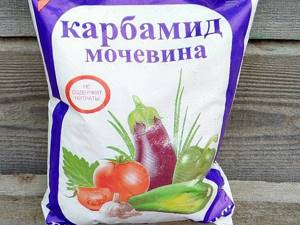
Copper sulfate
Pollination of an orchard with this product can be carried out no more than 2 times a year. The first treatment is carried out in early spring, before the buds appear. The reason is that even a weak solution of the drug can destroy young foliage. In addition, the use of copper sulfate is recommended if cracks appear on the seedling that need disinfection. As a rule, trees are treated with this fungicide in early March, and then towards the end of October. A solution of copper sulfate is used to protect apple and pear trees from scab, curl, phyllosticosis, and plums from coccycosis and curl.
For one young seedling, no older than 6 years old, you will need 2 liters of solution, and for an adult fruit-bearing plant - 10 liters.
The mixture for primary tree pollination is prepared as follows: add copper sulfate and lime (0.3 kg each) to water (10 l). Mix, leave for 48 hours, boil for 45 minutes, strain, add another bucket of liquid.
For secondary processing, you need to take 0.1 kg of lime and vitriol per 10 liters of liquid, boil and strain. Dilute with water and carry out the procedure.
In order not to prepare infusions, you can buy a ready-made product - Nitrafen, dilute it in 10 litres. liquids.
inkstone
If the orchard is dominated by old pears, plums and apple trees, then spraying with a solution of this product should be carried out in the spring (early) and autumn (later). Thanks to this, it will be possible not only to eliminate pests, but also to get rid of moss, lichen, cytosporosis, septosporosis, and black cancer. Also next year, planting trees in the orchard will increase the yield.
Iron sulfate not only fights insects and diseases in the garden, but also supplies plants with the iron they need to survive.
Diesel fuel
It and some other petroleum products have been used for a long time when it is necessary to cultivate an orchard. However, when using it, everything must be done carefully. It is mandatory to have personal protective equipment (respirator, gloves and closed clothing). In addition, spraying the garden with this product can result in the death of fruit plants. Therefore, all manipulations must be carried out carefully and in a timely manner.
In the spring, garden cultivation is possible when there is still snow in places and there are no buds on the trees. In autumn, manipulations cannot be carried out until the leaves have completely dropped from the plantings, that is, until frost.
This petroleum product cannot be used in its pure form. It is diluted in a large amount of liquid, and other means are also added that can minimize the destructive activity of diesel fuel. It is possible to use such a mixture with a concentration of 50%: dilute 10 parts of fuel with 9 parts of water and add 1 part of laundry soap to the mixture.
Preparation 30
Gardeners recommend using this product in early spring or late autumn, diluting 0.2 liters of the substance in 10 liters of water. The solution helps to effectively get rid of whiteflies, aphids, mites, leaf rollers and other insects that comfortably overwinter in the bark of fruit trees. Manufacturers guarantee absolute safety for seedlings when using Preparation 30. The bottom line is that the substance does not poison pests, but disrupts gas exchange in the larvae and eggs that are located in the treated area. Preparation 30 covers the bark on the trunk with a thin film, under which the pests die.
However, although this remedy is very effective, it is not recommended to use it often. The optimal timing of spraying is once every 3 seasons.
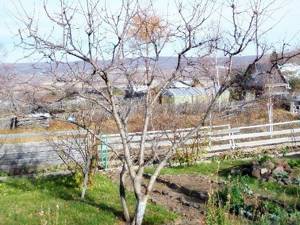
Copper sulfate
Bordeaux mixture will be able to demonstrate a positive result on stone fruit trees, killing all insects and providing additional microfertilizers to the plants themselves. Vitriol can be used at any time of the year, but it is in the fall that the danger of burns on the leaves disappears.

This makes it possible to increase the concentration of the product, which increases the effectiveness of treatments. Copper sulfate shows equally good results regardless of the time of year, fighting powdery mildew, scab, putrefactive formations or stains of various origins.
Important!
For young trees under 6 years of age, 2 liters of liquid per stem is sufficient; for adult plants, at least 10 liters will have to be used.
Crown treatment
The next step is spraying the crown and branches. Trees are treated with the following compounds:
inkstone
It is recommended to use for treating stone fruit plantations. The drug improves oxidative reactions; after treatment, moss disappears from the bark. The product is effective if trees are sick with scab, black cancer or have parasites.
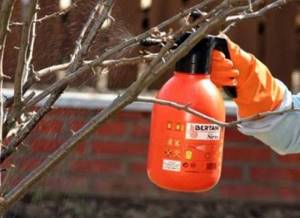
Copper sulfate
The product can not only be treated, but also fed to trees. The fungicide that is part of the drug is effective in the fight against scab, rot, and powdery mildew. It is advisable to carry out treatment twice a year: before flowering and in autumn, when most of the leaves have fallen.
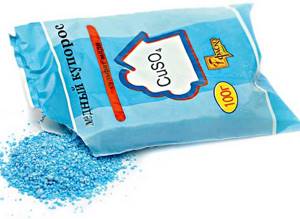
During processing, curliness is destroyed. The drug is effective against coccomycosis, moniliosis and clasterosporosis. Reliably protects garden plants from scab, phyllostictosis and monioiasis.
For mature trees, 10 liters of composition are required. For young people up to 2 liters.
Bordeaux mixture
It is recommended to be used to destroy fruit rot, black cancer, scab, phyllosticosis and powdery mildew on apple, quince and pear trees. Stone fruit crops are treated against holey spot, coccomycosis, curl and molinosis.
It is necessary to strictly observe the dosage, since stone fruit trees are sensitive to copper and an overdose can lead to cracking of the fruit in the future.
Urea
Spraying is carried out several times. The first treatment is carried out when the trees have shed half their leaves. To do this, 500 mg of urea is diluted in a bucket of water. After the leaves have completely fallen off, make a more concentrated solution by adding 500 mg of urea and 700 mg of saltpeter to 10 liters of water. This algorithm of action will allow you to destroy flower beetles, aphids, leaf rollers, and honey beetles. The treatment is carried out on the crowns, trunks and soil under the trees.
Strictly observe the dosage, as exceeding it can lead to a decrease in the resistance of trees to severe frosts.
Tank mixture
In case of significant damage to seedlings by diseases or insects, it is worth preparing a tank mixture, adding industrially produced insecticides and fungicides to the ingredients described above. Treatment can be carried out only after harvesting, otherwise there is a risk of poisoning and ingress of toxic substances.
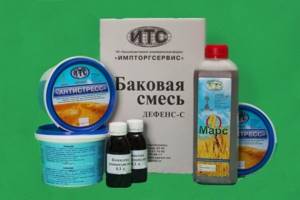
Until spring, they lose their strength and perform only a protective function to save the plantings. It will even be useful to treat fruit trees and soil in the garden in the fall, as this will save them from diseases and pests for a long time.
Treating the garden in the fall with copper sulfate. Treating trees with copper sulfate in the fall
Before using copper sulfate, you must carefully study the instructions, since the solution is too acidic and can harm the plant. Further use of the drug proceeds according to plan:
Firstly, you should correctly decide when to treat the area, fruit trees and greenhouse with copper sulfate in the fall. Spraying trees, for example, is carried out only after the leaves have completely fallen.
Secondly, the solution must comply with technological standards. It is not allowed to prepare the mixture “by eye”, which will do more harm than good.
A 3 percent mixture prepared according to the recipe is quite suitable:
- Pour 300 g of crystals into a liter of hot water;
- stir until a cloudy solution is obtained;
- dilute the concentrated mixture with 9 liters of hot water;
- Use the prepared product after it has cooled completely.
Thirdly, spraying with copper sulfate in the fall is carried out after the sanitary removal of old and diseased branches on trees and bushes. The old bark is separated from the trunk, and the leaves that have fallen from the crown are burned.
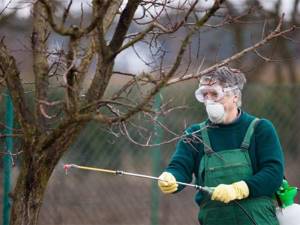
Fourth, dissolve enough copper sulfate to completely spray the garden:
- for a young tree, 2-4 liters of mixture is enough;
- an adult tree will need at least 6 liters;
- processing roses will require 1.5 liters per bush;
- For 1 m2 of soil you need 2 liters of solution.
There is no point in treating the garden with copper sulfate in the fall, when the leaves are still hanging on the branches. There will be an accumulation of copper, which will remain in the plant until spring, which will negatively affect the development of the ovary and the formation of fruits.
Traditional methods: cow dung and straw
If cracks, chips or broken places are found on the trunks, it is necessary to make a special medicinal composition from straw and cow dung, which will have to act as a bonding agent to prevent further destruction of the trunk. Before the procedure, it is worth pruning damaged branches or excess parts that provoke improper formation of the crown.
Pruning is carried out using garden shears, which must be sharp. And for old trees, it is necessary to perform rejuvenating pruning once with the onset of autumn, which will contribute to the appearance of new shoots and strong branches, prolonging the life of the plants.
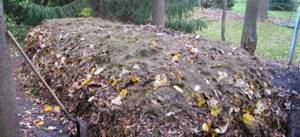
Gardeners who are skeptical about traditional recipes can purchase special broad-spectrum products in stores. You can also treat fruit trees in late autumn with chemicals against diseases and pests, especially for those who do not trust traditional methods.
Preparing trees for processing
Before you start spraying fruit trees, with the arrival of autumn you need to carry out preliminary measures.
Soil preparation
First prepare the soil:
- Fallen leaves around the fruit tree and bushes are carefully removed.
- After this, the soil in the tree trunk circle must be carefully dug up. It is recommended to dig to a depth of 15-20 cm, getting rid of the remaining grass and removing larvae from the soil.
- After digging, fertilizers (humus, peat, superphosphate, potassium sulfate) are added to the substrate. The type of feeding depends on the specific crop.
- Then all trees and bushes are watered with water.
Highly acidic soil is dug up with wood ash, dolomite flour, manure or lime.
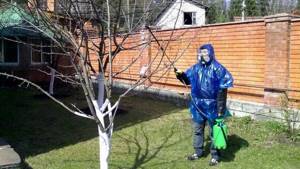
Treating the crown with fungicides
The first procedure can be carried out even before the end of leaf fall and harvesting. It is better to treat the crown with a weak urea solution (3%). You need to spray every branch. If the foliage has already fallen off, use an 8% mixture.
When spraying, personal protective equipment is required:
- respirator;
- protective glasses;
- special suit.
You cannot use food containers to prepare chemical compounds.
It is strictly not recommended to smoke or drink water during treatment. The composition must be used up to the bottom or disposed of.
How to spray bushes and trees in autumn
Among gardeners, the most popular treatment of plants after leaf fall is 3% Bordeaux mixture. This product helps destroy dangerous fungi - the causative agents of scab, powdery mildew, rot and other diseases. Using a special pressure cylinder or spray bottle, thoroughly spray all fruit trees, berry bushes (including strawberries), as well as perennial ornamental crops.
After leaf fall, but no later than the end of October, the crown of bushes and trees and the soil under them are sprayed with a solution of urea (urea). To prepare it, 500-700 g of the drug is diluted in 10 liters of water. This is an excellent prevention of scab and spotting.
The apple orchard can be additionally sprayed with 5% iron sulfate.
All spraying is carried out in dry and windless weather and safety precautions are not forgotten. When processing the garden, a person must wear a respiratory mask, rubber gloves, a protective gown and goggles to protect the eyes from contact with chemicals.
How to spray fruit trees?
To spray the garden in autumn you can use:
inkstone
Trees are treated with a solution of iron sulfate either before the beginning of the growing season, or with the beginning of leaf fall. Dissolved in water, this powder helps fight diseases of pome and stone fruit trees, and berry bushes. The effect of iron sulfate is detrimental to moniliosis, spotting, and scab.
To treat the garden, use a 5-7 percent solution of the substance. To prepare the working fluid you need:
- 500-700 g of powder is dissolved in a small amount of warm water;
- after complete dissolution, the volume of liquid is adjusted to 10 l;
- the strained mixture is poured into a sprayer;
- set up a very fine spray;
- Evenly cover the leaves and branches with the solution; it is not scary if some of the liquid gets on the ground. It also needs to be sprayed.
Copper sulfate
Copper sulfate of wasps or copper sulfate is a recognized fungicide that helps in the fight against spotting, rot, scab, coccomycosis, and lichens.
The working solution of copper sulfate for garden treatment should have a 3-5% concentration. It is prepared in the same way as iron sulfate, only 300-500 g of powder is taken for the same amount of water. Prepare and use in the same way.
Urea or carbamide
The use of urea or urea for autumn garden treatment includes treatment of trees and the soil underneath. The timing of such treatment is the beginning of leaf fall. A strong urea solution can burn out all wintering forms of pests and diseases.
